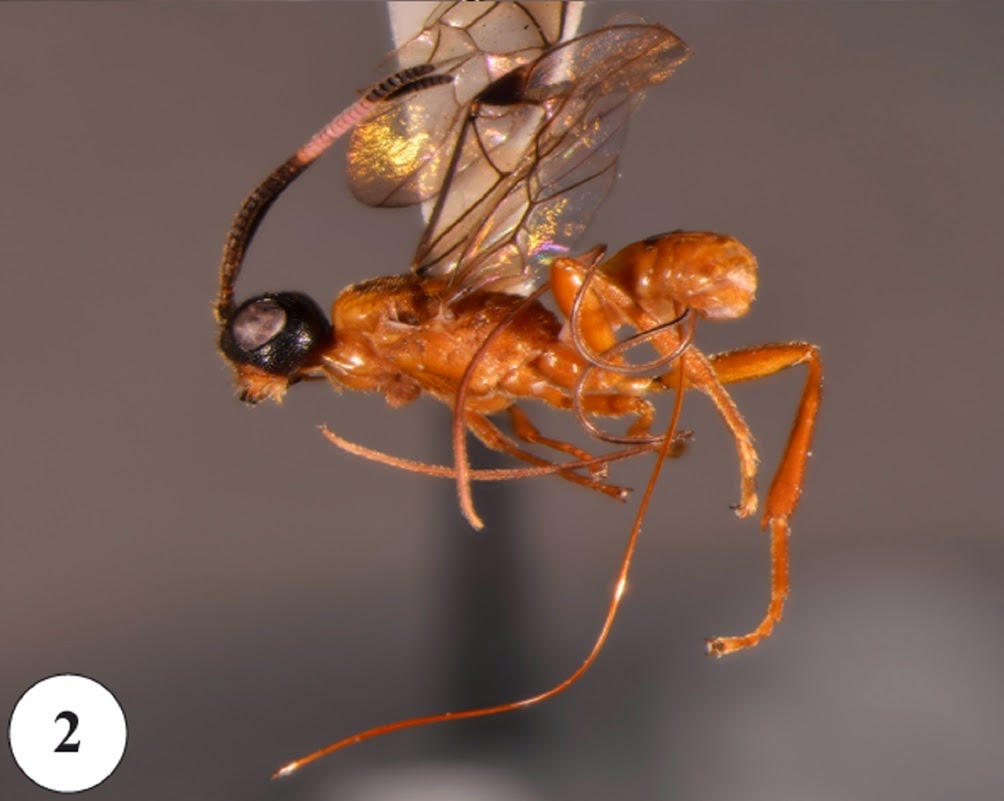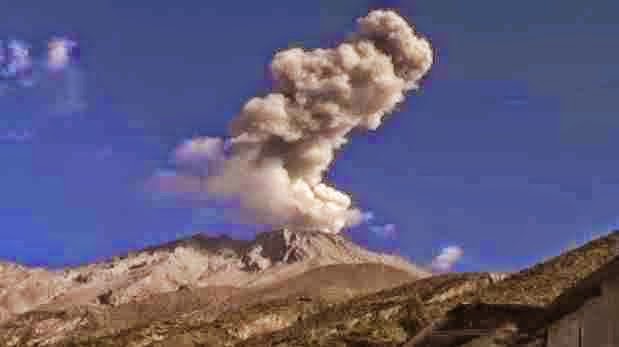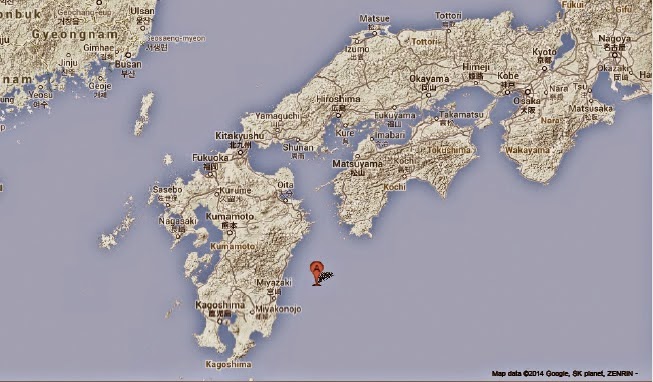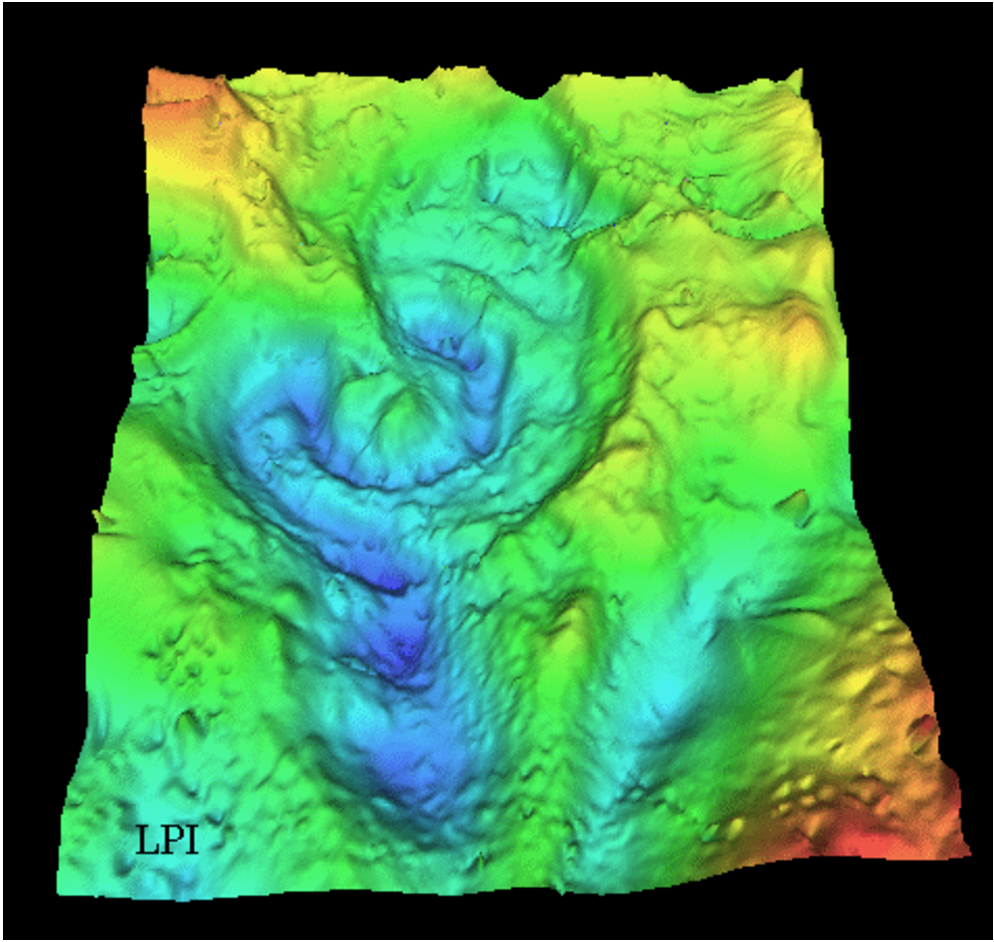The Betylobraconinae are a group of Braconid Wasps (small parasitoid
Wasps that lack stings and which will lay more than one egg on a host Insect)
found in Australia, New Guinea and New Caledonia. They are abundant within
their range, but their biology is poorly understood.
In a paper published in the journal Zootaxa on 9 September 2014,
Buntika Areekul Butcher of the Department of Biology at Chulalongkorn University,
Alejandro Zalvidar-Riverón of the Colección Nacional de Insectos at the Institutode Biología at the Universidad Nacional Autónoma de México, Thomas van de Kamp,
Tomy dos Santos Rolo and Tilo Baumbach of the Institute for Photon Science andSynchrotron Radiation at the Karlsruhe Institute of Technology and Donald
Quicke, also of the Department of Biology at Chulalongkorn University describe
two new species of Betylobraconid Wasps, one from Madang Province in Papua New
Guinea and the other from Baltic Amber. Both are placed in the extant genus Mesocentrus.
The Papuan species is given the specific name sasquatch, after the mythical North American creature also known as
Bigfoot (why this name was chosen is not explained). Mesocentrus sasquatch is described from a single female specimen 3.5
mm in length, collected in a Malaise Trap (fine net trap) at an altitude of
1700 m on Mount Wilhelm in Madang Province in Papua New Guinea.
Mesocentrus sasquatch in lateral view.
Butcher et al. (2014).
The Baltic Amber species is given the specific name palaeoeuropaea, meaning ‘ancient
European’. This is a 3.25 mm male specimen preserved in amber and visualised
using tomographic scans at the Synchrotron Radiation Facility of the Karlsruhe
Institute of Technology, due to the darkness of the amber in which it was
preserved. It is the first specimen of a Betylobraconid Wasp from outside the
modern distribution area (Australasia), and the oldest known member of the
group, as the amber is thought to be at least 44 million years old.
Mesocentrus palaeoeuropaea in lateral
view. Butcher et al. (2014).
Mesocentrus palaeoeuropaea in (left)
dorsal and (right) ventral views. Butcher et
al. (2014).
See also…
Braconid Wasps are small parasitoid wasps (Wasps whose larvae grow
inside the bodies of a living animal host) targeting a variety of Insect
and Spider species. They are unusual in that they will lay multiple
eggs within the same host (most parasitoid Wasps lay a single egg on
each host), thereby allowing multiple larvae to mature within a large
host, which is...
Braconid Wasps are small parasitic Wasps which can typically lay several eggs on a large host species (typically another Insect or Spider). The larval Wasps grow inside the host, before emerging to pupate on its surface; unusually for parasitic Wasps the host is not usually killed...
Braconid Wasps are parasitoid Wasps (i.e. Wasps whose larvae mature inside the living bodies of other insects, which generally die as a result) related to the more familiar Ichneumon Wasps, but much smaller. They have a formidable appearance, but are in fact stingless, making them harmless to non-host species. There are about 150 000 known...
Braconid Wasps are small parasitic Wasps which can typically lay several eggs on a large host species (typically another Insect or Spider). The larval Wasps grow inside the host, before emerging to pupate on its surface; unusually for parasitic Wasps the host is not usually killed...
Braconid Wasps are parasitoid Wasps (i.e. Wasps whose larvae mature inside the living bodies of other insects, which generally die as a result) related to the more familiar Ichneumon Wasps, but much smaller. They have a formidable appearance, but are in fact stingless, making them harmless to non-host species. There are about 150 000 known...
Follow Sciency Thoughts on Facebook.















































